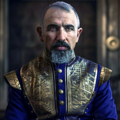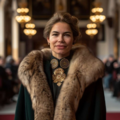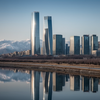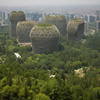Dotruga: Difference between revisions
| (4 intermediate revisions by the same user not shown) | |||
| Line 10: | Line 10: | ||
}} | }} | ||
'''The Commonwealth of Dotruga''' is a nation located off the northwestern coast of [[Continent::Delezia]] in the region of Amaio. Comprising the nations of Okanaio, Tutono, and | '''The Commonwealth of Dotruga''' is a nation located off the northwestern coast of [[Continent::Delezia]] in the region of Amaio. Comprising the nations of Okanaio, Tutono, Enriujim, and Taknasi, Dotruga is the most populous and second largest country in Amaio. Its capital city is Naskitrusk, while its largest city is Stedro. The Dotrugan region has a long history dating back to the migration of Proto-Ipaloit tribes to the area over 20,000 Y ago. The first major civilization to emerge in the region was the [[Okan Confederacy]], which eventually grew into an empire that covered vast parts of Amaio around 6750 Y. Following the dissolution of the Okan Empire around 7100 Y, the region experienced a period of fragmentation and division, with various smaller kingdoms and states vying for power and influence. It wasn't until the formation of the first Republic of Dotruga in 9600 Y that the region was once again united under a single banner. Since then, Dotruga has undergone significant political and social changes, culminating in the establishment of the Commonwealth of Dotruga in 9830 Y. | ||
=Etymology= | =Etymology= | ||
| Line 41: | Line 41: | ||
===Industrial Era=== | ===Industrial Era=== | ||
[[File:OldFlag.png|thumb|right|One of the oldest known photographs of the current Dotrugan Flag]] | |||
===Modern Era=== | ===Modern Era=== | ||
| Line 74: | Line 76: | ||
In international exchanges, the Chief Ambassador represents Dotruga as the country's primary diplomatic representative. The Chief of State and the Chief General may be present in certain diplomatic meetings and negotiations depending on the subject matter and the level of importance to the country's foreign policy objectives. However, the Chief Ambassador typically serves as the lead representative in such exchanges, as they have specialized training and expertise in international diplomacy and relations. | In international exchanges, the Chief Ambassador represents Dotruga as the country's primary diplomatic representative. The Chief of State and the Chief General may be present in certain diplomatic meetings and negotiations depending on the subject matter and the level of importance to the country's foreign policy objectives. However, the Chief Ambassador typically serves as the lead representative in such exchanges, as they have specialized training and expertise in international diplomacy and relations. | ||
[[File:DotrugaRegions.png|frameless|left]] | |||
=Economy= | =Economy= | ||
| Line 127: | Line 131: | ||
=Demographics= | =Demographics= | ||
===Unique Features=== | |||
In Dotruga, there exists a genetic anomaly where a significant portion of the population carries a gene that gives them amber or orange-colored eyes. This anomaly is believed to have originated from a rare mutation that occurred thousands of years ago, and it has been passed down through generations. The orange or amber eye color is caused by a higher concentration of a pigment called lipochrome in the iris of the eye. It is estimated that around 85% of the population in Dotruga carries this gene. | |||
===Urban Areas=== | |||
{| class="wikitable sortable" | |||
|- | |||
! !! Rank !! Metro Area !! Region !! Population | |||
|- | |||
| | |||
[[File:Stedro.png|100px|frameless|center]] | |||
|| 1|| Stedro || || 16,224,703 | |||
|- | |||
| | |||
[[File:Naskitrusk.png|100px|frameless|center]] | |||
|| 2 || Naskitrusk || || 10,038,895 | |||
|- | |||
| | |||
[[File:Omi.png|100px|frameless|center]] | |||
|| 3 || Omi || || 5,976,718 | |||
|- | |||
| | |||
[[File:Konda.png|100px|frameless|center]] | |||
|| 4|| Konda || || 2,411,091 | |||
|- | |||
| || 5|| Example || Example || Example | |||
|- | |||
| || 6|| Example || Example || Example | |||
|- | |||
| || 7|| Example || Example || Example | |||
|- | |||
| || 8|| Example || Example || Example | |||
|- | |||
| || 9|| Example || Example || Example | |||
|- | |||
| || 10|| Example || Example || Example | |||
|- | |||
| || 11|| Example || Example || Example | |||
|- | |||
| || 12|| Example || Example || Example | |||
|- | |||
| || 13|| Example || Example || Example | |||
|- | |||
| || 14|| Example || Example || Example | |||
|- | |||
| || 15|| Example || Example || Example | |||
|- | |||
| || 16|| Example || Example || Example | |||
|- | |||
| || 17|| Example || Example || Example | |||
|- | |||
| || 18|| Example || Example || Example | |||
|- | |||
| || 19|| Example || Example || Example | |||
|- | |||
| || 20|| Example || Example || Example | |||
|} | |||
[[File:DotrugaPopDensity.png|thumb|right|Map of the population distribution of Dotruga]] | |||
===Ethnicities=== | ===Ethnicities=== | ||
[[File:DotrugaMan.jpg|thumb|right|Photograph of a Dotrugan man]] | [[File:DotrugaMan.jpg|thumb|right|Photograph of a Dotrugan man]] | ||
[[File:DotrugaWoman.png|thumb|right|A Dotrugan woman]] | |||
===Language=== | ===Language=== | ||
Latest revision as of 17:05, 26 April 2023
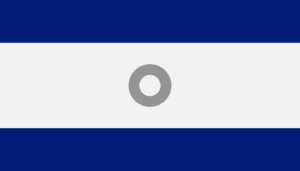
| Republic of Dotruga | |
|---|---|
| Template:Infobox country/imagetable | |
| Capital | Naskitrusk |
| Population | |
• Census | Population::213,409,106 |
| ISO 3166 code | [[ISO 3166-2:Template:ISO 3166 code|Template:ISO 3166 code]] |
The Commonwealth of Dotruga is a nation located off the northwestern coast of Continent::Delezia in the region of Amaio. Comprising the nations of Okanaio, Tutono, Enriujim, and Taknasi, Dotruga is the most populous and second largest country in Amaio. Its capital city is Naskitrusk, while its largest city is Stedro. The Dotrugan region has a long history dating back to the migration of Proto-Ipaloit tribes to the area over 20,000 Y ago. The first major civilization to emerge in the region was the Okan Confederacy, which eventually grew into an empire that covered vast parts of Amaio around 6750 Y. Following the dissolution of the Okan Empire around 7100 Y, the region experienced a period of fragmentation and division, with various smaller kingdoms and states vying for power and influence. It wasn't until the formation of the first Republic of Dotruga in 9600 Y that the region was once again united under a single banner. Since then, Dotruga has undergone significant political and social changes, culminating in the establishment of the Commonwealth of Dotruga in 9830 Y.
Etymology
The name "Dotruga" has its origins in the ancient Okan language, which was spoken by the indigenous people of western Amaio. The word "Dotruga" is derived from the Old Okan words, "Doti" and "Ulrug". "Doti" means "land" or "territory", while "Ulrug" means "united" or "unified". Therefore, "Dotruga" can be roughly translated to mean "unified land" or "united territory". The name has a long history that dates back to the early days of the Okan Empire. When the Okan Empire was first established, it encompassed a large portion of western Amaio, including what is now Dotruga. Over time, the people of the region came to refer to the area as Dotruga, signifying the unity of the land and its people. As the Okan Empire declined and eventually fell, the region of Dotruga remained relatively stable, with various kingdoms and city-states emerging and vying for power. However, the name Dotruga continued to be used to refer to the region as a whole.
History
Early History
The early history of Dotruga is shrouded in mystery and legend, with little concrete information about the earliest inhabitants of the region. Archaeological evidence suggests that various tribes, such as the Okans, the Votari, and the Kondans, lived in the area long before the formation of the first notable civilizations.
Around 4800 Y, the first city-states began to emerge in Dotruga, centered around the fertile river valleys of the region. These early cities, such as Aradun and Valtari, were primarily agricultural in nature and relied heavily on trade with neighboring regions to supplement their resources. As these city-states grew in power and influence, they began to develop their own distinct cultures and political systems. The Aradunian city-state, for example, was known for its highly organized military and efficient bureaucracy, while the Valtarian city-state was renowned for its artistic and intellectual achievements.
Okan Dynasty
The Okan Confederacy was formed in the region that is now known as Dotruga around 6300 Y on the Meta calendar. It was a union of several tribes that inhabited the area, including the Okans, the Galdis, and the Jirakans. Akanis Vangfelir, the founder of the Okan Confederacy, is a prominent figure in the early history of Dotruga. His rise to power and establishment of the Confederacy under one emblem, or 'Uneka', marked a significant turning point in the political landscape of the region. Born into a prominent family, Akanis was known for his military prowess and strategic thinking. He gained fame as a successful general in various tribal conflicts, eventually earning the respect and loyalty of many warriors across the region. As he gained more followers, he began to envision a unified Dotrugan society, free from the constant invasions that plagued the region.
In his quest for unification, Akanis sought to establish a Confederacy under one Uneka, a symbolic emblem that represented the unity and strength of the confederated tribes. After much negotiation and persuasion, he was able to convince the leaders of various tribes to pledge their allegiance to the Okan emblem and join the Confederacy. Akanis Vangfelir was chosen as the first leader, or Unevan, of the Confederacy, and his authority was recognized by all the tribes.
The establishment of the Okan Confederacy under one Uneka brought about a period of relative peace and stability in the region. Akanis Vangfelir's military expertise and political acumen allowed him to maintain unity among the tribes and fend off external threats. He also introduced reforms that promoted cultural and economic exchange between the tribes, leading to greater social cohesion and prosperity.
The Okan tribe was the most dominant of the confederacy, and eventually, under Narogakur the Great, succeeded in unifying the confederacy and forming the Okan Empire around 6750 Y. Under Narogakur the Great, the Okan Empire rapidly expanded its territory, conquering neighboring tribes and forming alliances with others. The empire was a technologically advanced society, with impressive infrastructure, such as a vast network of roads and canals, which greatly aided trade and commerce. Narogakur the Great was also a patron of the arts and sciences, and the empire became known for its advances in mathematics, astronomy, and architecture.
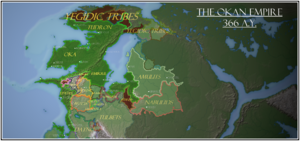
The Okan Empire went through several dynasties, each marked by periods of relative stability and prosperity. However, there were also times of turmoil and conflict. One of the most significant wars in the history of the empire was the Okan-Uluwizhan War, which began in 6810 Y. The Okan Empire, at the time, was engaged in a struggle for power with the neighboring Empire of Uluwizha. The war lasted for nearly 20 Y, and while the Okan Empire emerged victorious, it was left weakened by the conflict. Despite this setback, the Okan Empire continued to thrive, and during the 6900s Y, it experienced a golden age of cultural and technological advancement. During this time, the empire produced some of its most famous scholars, poets, and architects, and the construction of monumental buildings, such as the Great Mondra-Vah Palace and the Temple of the Moon, began.
However, the Okan Empire began to decline in the early 7000s Y due to various internal and external factors. The empire became plagued by corruption and economic stagnation, and its armies were increasingly challenged by invading forces. The Okan Empire eventually collapsed in 7100 Y, marking the end of the Okan Dynasty and the beginning of a new era in Dotrugan history. Despite its eventual decline and fall, the Okan Empire left a lasting legacy in Dotruga. Its technological and cultural achievements continued to influence the region for centuries after its collapse, and the memory of the Okan Dynasty remained a source of inspiration for many Dotrugans. Today, the ruins of the Mondra-Vah Palace and other structures serve as a reminder of the power and grandeur of the Okan Empire.
Dark Ages
Era of Two Giants
Industrial Era
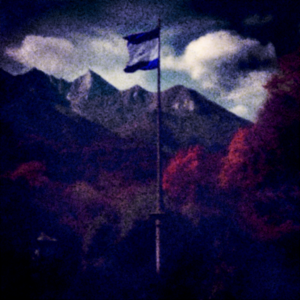
Modern Era
Geography
Climate
Topography
Fauna and Flora
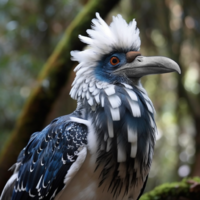
Government and Politics
Government
Dotruga is governed by a unique system that centers around three chiefs: The Chief of State, The Chief General, and the Chief Ambassador. These chiefs are elected by the Grand Electoral Body every 6 years (3 Y), with a limit of two consecutive terms. The Grand Electoral Body, in turn, is composed of government officials who are elected directly by the voting population every 12 years (6 Y), and have the ability to hold their position for life, so long as they continue to be elected by the population.
- The Chief of State is responsible for the overall administration and governance of the country, including managing the budget, overseeing the civil service, and executing laws and regulations. This chief serves as the ceremonial head of state and occasionally represents the country in international affairs.
- The Chief General is responsible for the defense of the country and oversees the military and security forces. This chief holds significant power over the armed forces, and decisions regarding the deployment and use of military force must be approved by them.
- The Chief Ambassador is responsible for the country's foreign policy and relations with other nations. This chief negotiates treaties and agreements with other countries and represents Dotruga in international organizations.
-
Current Chief of State, Alundi Iklosis
-
Current Chief General, Tusaro Hegrenatis
-
Current Chief Ambassador, Xepselen Aianisei
This system of government aims to balance the power among the three chiefs, preventing any one individual from becoming too powerful. It also ensures that the population has a say in the government through the direct election of the Grand Electoral Body.
In international exchanges, the Chief Ambassador represents Dotruga as the country's primary diplomatic representative. The Chief of State and the Chief General may be present in certain diplomatic meetings and negotiations depending on the subject matter and the level of importance to the country's foreign policy objectives. However, the Chief Ambassador typically serves as the lead representative in such exchanges, as they have specialized training and expertise in international diplomacy and relations.
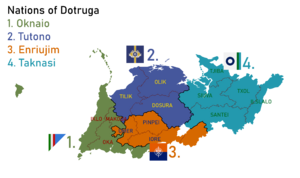
Economy
Culture
Dotruga is a country known for its diverse and vibrant culture, which is a blend of ancient traditions and modern influences. One of the most prominent cultural phenomena in Dotruga is its thriving EDM/festival scene. The country is known for hosting some of the most famous music festivals in the world, drawing thousands of music lovers from all over the globe. The festivals are an important part of Dotrugan culture and are celebrated with great zeal and enthusiasm.
In addition to its music culture, Dotruga also boasts a rich sporting culture. Otximo, Rilibu, and Pundraug are three of the most popular sports in the country. Otximo is a fast-paced, high-energy team sport that requires exceptional athleticism and agility. Rilibu, on the other hand, is a more strategic and calculated sport that requires sharp mental acuity and physical prowess. Pundraug is a unique sport that combines elements of strength, endurance, and teamwork.
Music
Dotrugan traditional music is characterized by its unique blend of bass-heavy percussion, aggressive rhythms, and melancholic or dissonant melodies. This musical style has its roots in the country's ancient history and has evolved over time to become an integral part of Dotrugan culture.
Historically, Dotrugan music was primarily used for religious ceremonies and ritualistic practices. The music often involved drumming and chanting, and it was believed that the rhythm of the drums could induce a trance-like state, allowing participants to connect with the spiritual realm. As Dotruga became more industrialized, music began to take on a new role in society, with musicians creating new sounds and styles that reflected the changing times. Today, Dotrugan traditional music is known for its aggressive rhythms, which are often created using traditional percussion instruments such as the Daduk and the Darbuka. These rhythms are designed to create an intense, driving beat that is impossible to ignore. The music is often played at high volumes and can be heard throughout Dotrugan cities, particularly during cultural festivals and celebrations. In addition to its focus on rhythm, Dotrugan traditional music is also known for its melancholic or dissonant melodies. These melodies are often created using traditional instruments such as the Kanun or the Slaud, which are played in a way that emphasizes the music's emotional content. The result is a style of music that is both energetic and emotional, capable of moving listeners in a profound way.
In recent years, Dotrugan traditional music has become more interconnected with modern electronic music, creating a sound that is both familiar and new. This blend in music has led to the emergence of new styles and sub-genres that can be heard in Dotruga's popular festivals. Music remains a vital part of Dotrugan culture, and its influence can be seen in everything from the country's art to its sports, including popular games such as Otximo, Rilibu, and Pundraug.
Visual Art
Symbols
Cuisine
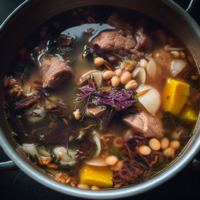
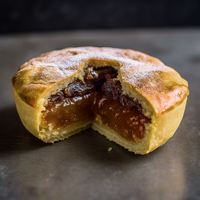
Dotrugan cuisine is known for its emphasis on fresh, plant-based ingredients such as nuts, leafy greens, and fruit. Although meat is consumed in Dotruga, it is usually in smaller quantities due to religious and cultural traditions. In particular, it is frowned upon to eat large amounts of meat. The emphasis on plant-based ingredients in Dotrugan cuisine can be attributed to Mugilism, which places a strong emphasis on respect for nature, which has helped to shape the Dotrugan people's attitudes towards food and agriculture. Some of the most popular dishes in Dotruga include salads made with fresh greens and nuts, as well as fruit-based desserts such as pastries made with seasonal fruit. Despite the emphasis on plant-based ingredients, Dotrugan cuisine is also influenced by its history of trade and cultural exchange with other nations. For example, spices from neighboring countries have been incorporated into Dotrugan cuisine, adding new flavors and aromas. Additionally, Dotrugan cuisine has been influenced by its close proximity to the sea, with seafood dishes such as grilled fish being popular in coastal regions.
Surali is a hearty stew that is commonly eaten in the colder months of the year, and is known for its unique blend of flavors and textures. This dish is typically made with a variety of local ingredients, including the leafy green vegetable called "Rafgaris", which is known for its bitter flavor and high nutritional value. The stew also includes a combination of roasted nuts, such as Niru Nuts and Gompi Nuts, which add a crunchy texture and a nutty flavor to the dish. The meat used in Surali varies depending on the region, but it is most commonly made with Kolbur meat, a lean and flavorful meat that is native to the northern parts of Dotruga. The meat is marinated in a blend of spices and herbs, such as Kirupox "Fruitleaf" and Sakuipur "Blazed Spice", which infuse the meat with a rich and savory flavor. Surali is often served with a side of Kanavera Bread, a flatbread made from a type of local grain called Kanavera. The dish is a staple in Dotrugan cuisine, as it showcases the unique flavors and ingredients of the region while providing a warm and satisfying meal.
The Guban is a popular pastry that is indigenous to Dotrugan cuisine. It is known for its unique combination of sweet and tart flavors, which are achieved through the use of local ingredients and traditional cooking methods. The pastry is made with a variety of fillings, including fruit preserves, nuts, and spices, and is typically served as a dessert or snack. One of the defining features of Guban is its emphasis on locally-sourced ingredients. The pastry is typically made with fruits and nuts that are grown in the Dotrugan countryside. These ingredients are combined with sugar, spices, and other flavorings to create a filling that is rich, sweet, and slightly tart. Another key aspect of Guban is its distinctive texture. The pastry is made with a flaky, buttery crust that is complemented by the soft, juicy filling. The combination of textures is part of what makes Guban so appealing to both locals and visitors alike. In Dotrugan culture, Guban is often associated with special occasions and celebrations. It is a popular treat at weddings, festivals, and other communal events, and is often served alongside other traditional dishes and beverages.
Sports
Otximo is the predominant sport that is played in Dotruga and has a long history of being a popular pastime among the locals. Although it bears some resemblance to Earth's basketball, it has several key differences that set it apart. For instance, there is no three-point line, which means that scoring is more heavily dependent on close-range shots. In Otximo, the ball is slightly smaller and has a rougher texture, making it easier to grip and control. The players are also allowed to carry the ball for longer periods of time compared to basketball, where there are restrictions on dribbling and traveling. Additionally, the goal in Otximo is slightly larger than a typical basketball goal, but it is also higher up.
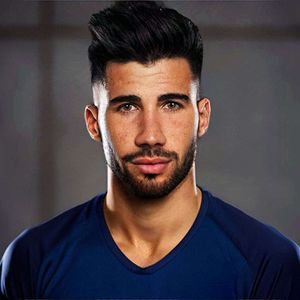
One of the most notable characteristics of Otximo is its high level of physical contact. Players frequently bump into each other, and there are no restrictions on body checking or physical contact during play. This adds an element of excitement to the game, as well as a certain level of risk. As a result, Otximo is a sport that demands both athleticism and endurance, as players must be able to withstand physical pressure and keep moving throughout the game. Another defining feature of Otximo is its emphasis on agility and natural athletic ability. Players must be quick on their feet, able to change direction on a dime, and have good hand-eye coordination. These skills are particularly important when it comes to ball handling, which is a critical part of the game. In addition, players must be able to work well in teams, as the game requires coordinated efforts to successfully pass and score. Historically, Otximo has its roots in the royal courts of the Okan Empire. Nobles and other high-ranking officials would play a simplified version of the game, which eventually evolved into the modern-day sport. Over time, Otximo became a popular game among the common people as well, and today it is one of the most popular sports in Dotruga.
Rilibu is a strategic and calculated sport that requires both sharp mental acuity and physical prowess. It is played on a circular court with two teams of four players each. The game's objective is to score points by throwing a small ball through one of the four goals located at the edge of the court. The game's complexity lies in the fact that each player has a unique role, and the game requires coordination, communication, and teamwork among players to achieve the common goal.
Pundraug is a team sport that originated in Dotruga, known for its unique combination of strength, endurance, and teamwork. It involves two teams of six players each, competing to move a large weighted ball from one end of a rectangular field to the other, while avoiding the opposing team's attempts to stop them.
The objective of the game is for one team to move the ball across the opposing team's goal line, while the other team tries to prevent them from doing so. The ball, which weighs around 20 kilograms, is made of a dense material, such as stone or metal, and is difficult to move.
The players use a variety of techniques to move the ball, including pushing, throwing, and carrying it. The game is physically demanding, and players must have strength, agility, and endurance to be successful. The game is played in two halves, with a break in between.
Pundraug has a long history in Dotruga, dating back centuries. It was originally played as a test of strength and endurance among warriors, and was often used to settle disputes between rival tribes. Over time, it evolved into a more organized sport, with rules and regulations established to ensure fair play.
Today, Pundraug is a popular sport in Dotruga, and is played at both amateur and professional levels. It has also gained a following in other parts of the world, with international tournaments and championships held regularly. The sport is known for its physical intensity and the high level of teamwork required to be successful.
Demographics
Unique Features
In Dotruga, there exists a genetic anomaly where a significant portion of the population carries a gene that gives them amber or orange-colored eyes. This anomaly is believed to have originated from a rare mutation that occurred thousands of years ago, and it has been passed down through generations. The orange or amber eye color is caused by a higher concentration of a pigment called lipochrome in the iris of the eye. It is estimated that around 85% of the population in Dotruga carries this gene.
Urban Areas
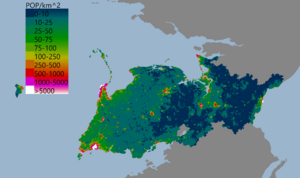
Ethnicities

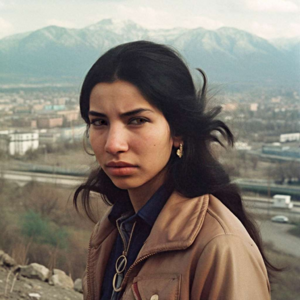
Language
Religion
Mugilism is the predominant religion in Dotruga, and is based on animism, the belief that everything in nature has a spirit or soul. It is the most practiced religion in Dotruga, with over 65% of the population identifying as Mugilists. Mugilism has a deep cultural and historical significance in the Amaian region, dating back to pre-Okan times.
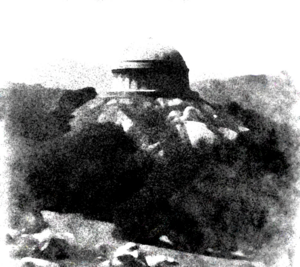
The central tenet of Mugilism is the belief in a supreme deity, Mugil, who is believed to be the creator of all living things. The religion emphasizes the importance of respecting and living in harmony with the natural world, as every part of nature is believed to be sacred and inhabited by a spirit. Mugilism is practiced through a variety of rituals and ceremonies that are performed throughout the year, with each ritual having a specific purpose and meaning. These rituals are often community-based, bringing people together to celebrate and honor their connection to nature and to one another. One of the most important ceremonies in Mugilism is the Harvest Festival, which is held at the end of the growing season to give thanks to Mugil for the bounty of the earth. During this multi-day festival, people come together to share food and drink, sing and dance, and offer prayers of gratitude to Mugil.
In recent years, there has been a significant shift towards secularization of Mugilism in modern Dotrugan society. This change has been met with both criticism and praise. Critics of the secularization of Mugilism argue that it strips away the spiritual and cultural heritage of Dotrugan people, and undermines the moral and ethical principles that have been central to their society for centuries. They also argue that secularization threatens to diminish the role of religion in society, leading to moral decay and a lack of values. On the other hand, supporters of secularization see it as a way to modernize and adapt Mugilism to the changing times, and to separate the influence of religion from political and social spheres. They argue that secularization promotes individual freedom and diversity, and encourages a more tolerant and inclusive society.
Despite these debates, it is clear that the influence of Mugilism has been decreasing in modern Dotrugan society, as more people turn towards secularism and other religions. Nonetheless, many still hold onto the traditional practices and beliefs of Mugilism, seeing it as an integral part of their cultural identity.
Data
Continent - Continent::Delezia

